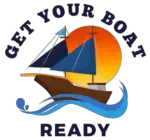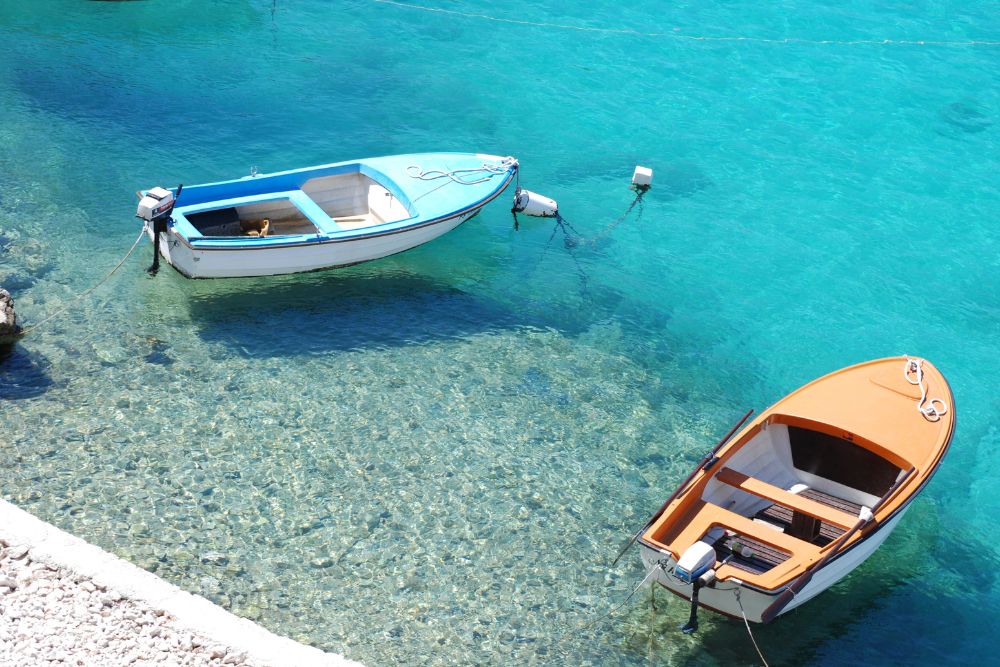At some point, every boat owner will need to replace their steering cables. But before you can replace the steering cables, you need to know the proper length. Read further and we’ll show you how to measure a boat steering cable so that you can be sure to get the right size.
Identify the Type of Steering Cable for Your Boat
When it comes to boat steering cables, there are a few different types to choose from. The type of cable you need will depend on the size and power of your engine, as well as the maximum speed limit and power steering abilities of your boat.
Rotary Steering Cables
Rotary steering cables are the most common type of steering cable used on small to medium-sized boats. They are less expensive than other types of steering cables and they offer a good steering feel and precision. One downside of rotary steering cables is that they can be difficult to install, so it’s important to consult with a professional if you’re not sure how to do it yourself.
Rack-and-Pinion Steering Cables
Rack-and-pinion steering cables are typically used on larger boats because they can provide more power and a better feel than rotary steering cables. They are also easier to install, making them a good option for DIYers. However, rack-and-pinion steering cables are more expensive than rotary steering cables, so keep that in mind when making your decision.
Hydraulic Steering Cables
Hydraulic boat cables are the most expensive type of cable, but they offer the best feel and performance. Hydraulic boat cables are typically used on high-performance boats where accuracy and precision are paramount. If you’re looking for the best possible steering experience, then hydraulic boat cables are the way to go.
Check the Hot-Stamped Identification Number
Before you purchase a used boat, it’s important to check the hull identification number (HIN) to make sure it’s properly registered and that there are no outstanding recalls on the vessel. The HIN is typically located on the aft portion of the hull, on the starboard (right) side. It should be easy to find and read; if it’s not, that’s a red flag.
What is a HIN?
The Hull Identification Number (HIN) is a unique 12-character code that is required by law to be affixed to all recreational boats. The HIN is used for boat registration and titling, as well as for reporting stolen boats to law enforcement.
The HIN consists of three parts:
- The manufacturer’s identification number (MIN),
- A production serial number, and
- A model year identifier.
The final six characters of the HIN must be letters or numbers, but they can be in any order.
Where is the HIN located?
The first step is to locate the HIN. It should be easy to find; if it’s not, that’s a red flag. The HIN is typically located on the aft portion of the hull, on the starboard (right) side. Once you’ve found it, take a close look at it to make sure all of the characters are legible and in their proper order.
If any of them are missing or seem out of place, that’s another red flag. It should be permanently stamped, burned, or etched into the hull material. It should not be embedded in paint or other materials that could flake or peel off over time.
Note: If your boat was built before November 1, 1972, it may not have a HIN. If this is the case, you’ll need to obtain a state-issued Certificate of Number instead.
Checking the HIN
To check the HIN on your boat, follow these steps:
- Remove any paint or debris from around the area where the HIN is located.
- Use a magnifying glass to get a close look at the characters making up the HIN. Make sure that each character is clearly defined and that there are no gaps between them. If any of the characters are damaged or missing, stop here and do not use the boat until you’ve had it repaired by a qualified professional.
- Once you’ve verified that the HIN is intact and legible, use our free HIN decoder tool to check that the letters and numbers match up with what’s listed on your registration paperwork. If they don’t match, stop here and do not use the boat until you’ve had it repaired by a qualified professional.
- That’s it! You’re now ready to enjoy a day out on the water with peace of mind knowing that your boat’s identification number is in good condition.
Measure Both the Cable and the Boat
As a boat owner, you want to make sure both your steering cable and your boat are properly measured. This will ensure a proper fit and function of your boat parts. Here is a step-by-step guide on how to measure both the steering cable and the boat.
First, you need to determine the length of the steering cable. To do this, you will need to take into account the make and model of your boat. You can find this information in your owner’s manual or by contacting the manufacturer directly. Once you have this information, you can then start measuring the cable.
Next, you need to determine the distance between the engine mount and the rudder post. This measurement is important because it will allow you to determine if the steering cable is long enough. To get this measurement, you will need a tape measure and a helper. And remember, measure twice order once!
First, have your helper hold one end of the tape measure at the engine mount. Then, holding the other end of the tape measure, stretch it out to the rudder post. Make sure to take into account any obstacles that may be in the way, such as hoses or wires. Once you have this measurement, you can then start measuring the cable.
Now that you have both measurements, you can start measuring the cable itself. Using a tape measure, start at one end of the cable and measure to the other end. Make sure to take into account any bends or kinks in the cable. Once you have this measurement, you can compare it to both measurements that you took earlier.
If the measurements are close, then chances are good that the steering cable will work with your boat. However, if there is a significant difference between all three measurements, then it is best to consult with a professional before proceeding any further.
Measuring the Boat Steering Cable
Measuring your boat steering cable is important to ensure that you have the correct size for your boat. The wrong size steering cable can cause damage to your boat and/or be a safety hazard. The steering cable is responsible for connecting the steering wheel to the boat’s rudder, and if it’s not properly maintained, it can lead to serious accidents. Fortunately, measuring your boat steering cable is a relatively simple process that only takes a few minutes.
Rotary Steering Cable Formula
Rotary steering cable is the measurement of the plastic jacket with an additional 18 inches. After you get your number, take that and round it up to the next foot.
Rack-and-Pinion Steering Cable Formula
Rack-and-pinion cables are measured from the end of the plastic jacket to the end of the inner core. To get an accurate measurement, add 30 inches to this number. Once you have your measurement, round it up to the nearest foot.
Hydraulic Jet Boat Steering Cable Formula
Hydraulic jet cables are measured from one edge of the jacket to the other. Round it up to the next foot from this number to get your final measurement. This type of cable is typically found on smaller boats.
Measuring the Boat’s Dimensions for A Steering Cable
In order to determine what size steering cable you need for your sterndrive boat, you’ll need to take some measurements. First, you’ll need to divide your boat into three sections- section A, section B, and section C.
- Section A is the distance between the centerline of the helm and the gunwale.
- Section B is the entire length of the gunwale to where it intersects with the transom.
- And finally, section C is the distance from the intersection of gunwale and transom along to the boat’s centerline.
Once you have these measurements, you can add them together (A+B+C) to get a base measurement for your steering cable.
However, there are some additional factors that you need to take into account when making your final measurement. For every 90° bend in your cable routing, you’ll need to deduct 4 inches from your total length. If your installation is attached directly to the transom, you’ll need to deduct 6 inches. Finally, if you have fittings through your engine tilt tube, you’ll need to add 6 inches.
Once you’ve taken all of these factors into account, you can take your final measurement by adding up all of your deductions and additions (A+B+C-4 inches (for every 90° bend)-6 inches (if attached directly to transom)+6 inches (if fittings through engine tilt tube)). You should then round up to the nearest foot for your final cable length measurement.
If you are measuring a steering cable for an outboard-powered boat, you will need to add 6 inches to A, B, and C individually.
Ensure Regular Maintenance and Care of Steering Cable
One of the most important safety features on your boat is the steering cable. Regular maintenance and care will ensure that your steering cable lasts for years to come. Here are some tips on how to properly maintain and care for your steering cable.
Inspect Your Steering Cable Regularly
The first step in proper steering cable maintenance is regular inspection. You should inspect your steering cable at least once a month for any signs of wear or damage. If you notice any fraying or kinking, replace the cable immediately. It’s better to be safe than sorry when it comes to steering cables!
Lubricate Your Steering Cable Regularly
Another important step in maintaining your steering cable is to lubricate it regularly. Lubricating your steering cable will help reduce friction and wear, and extend its lifespan. You should lubricate your steering cable at least once a season, or more often if you live in a salty or humid environment.
In Conclusion
Measuring a boat steering cable may seem like a daunting task but it’s actually quite simple. With just a tape measure and a few minutes, you’ll be on your way to replacing your old steering cables with new ones.
You can ensure that your steering cable will last for years to come. Regular inspection and lubrication are essential to keeping your steering cable in tip-top shape. So don’t forget to add these steps to your boat maintenance routine!
Measuring and properly maintaining your steering cable is critical to the safety of your boat. Use the formulas and tips in this article to ensure that you have the correct length steering cable for your boat and that it is well-maintained. With a little bit of care, your steering cable will last for many years to come!



